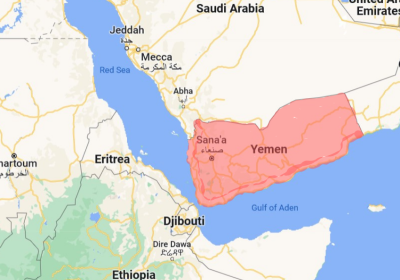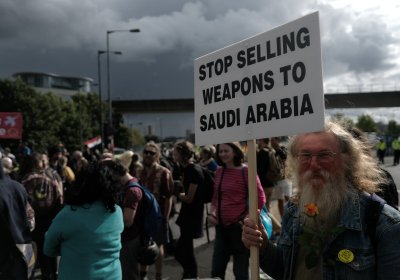The eight year long Saudi war on Yemen looks, at long last, within reach of a resolution, reports Rupen Savoulian.
Saudi Arabia
The rebranding of Saudi Arabia's blood-stained image using sports has been spearheaded by Crown Prince Mohammed bin Salman, palace coup plotter and figure behind the butchering of dissident journalist Jamal Khashoggi, writes Binoy Kampmark.
Saudi Arabia is suffering setbacks, in its war in Yemen, the oil price collapse and the COVID-19 pandemic, reports Rupen Savoulian.
Protesters gathered outside the Sydney office of the Australian arms manufacturer EOS (Electro Optic Systems) on February 21 to oppose the sale of high-tech military equipment to Saudi Arabia, which is waging a genocidal war against the people of Yemen.
Saudi Arabia’s Crown Prince Mohammed bin Salman received a warm welcome in Riyadh on October 23 during his surprise visit to the Future Investment Initiative (FII) conference.
The conference has yielded investment deals worth an estimated US$50 billion, despite calls for a boycott by activists and some countries over the murder of journalist Jamal Khashoggi. However, Saudi Arabia is proving to be too tempting an investment opportunity for many businesses despite the large public outcry.
As the brutal murder of a Saudi journalist Jamal Khashoggi by the Saudi regime dominates headlines, Khury Petersen-Smith takes a look at Show the US is backing Saudi war crimes in Yemen.
Twenty days after Saudi Arabia and the United Arab Emirates (UAE) bombed a school bus full of children in Yemen in August, United States Defense Secretary James Mattis hosted officials from the two US allies at the Pentagon.
As Yemeni journalists reported that at least 15 civilians were killed in Saudi airstrikes in the port city of Hodeidah on September 12, US Secretary of State Mike Pompeo officially certified that Saudi Arabia and the United Arab Emirates (UAE), whose three-year assault on the country has been made possible by US support, are doing all they can to avoid civilian casualties.
Two years of the U.S.-backed Saudi war in Yemen has caused a disastrous humanitarian situation in the poorest Arab country. The conflict is increasingly stoking anti-American sentiment among Yemenis, many of whom see the U.S. government as a killer using Saudi hands.
The conflict began in 2015, when President Abed Rabbo Mansour Hadi resigned and went into exile, and Saudi Arabia led an armed coalition allegedly to restore Hadi’s legitimacy. Hadi now leads a government-in-exile while the rebel Houthi movement surges in Yemen.
The world media’s attention has focused on the very real humanitarian crisis gripping hurricane-ravaged nations in the Caribbean and regions of the United States, but the “world’s worst humanitarian catastrophe” (in the words of The New York Times in August) is in Yemen.
An air strike by the US-backed Saudi-led coalition on a hotel near the Yemeni capital Sanaa killed dozens of people on August 23, multiple news agencies have reported. It came as a humanitarian crisis extended its grip on the impoverished nation.
The United Nations High commission for Refugees (UNHCR) reported on July 19 that an airstrike carried out by the US-backed Saudi-led coalition in Yemen killed 20 civilians — including women and children — who were fleeing violence in their home province.
The agency said in statement: “Most of those killed are believed to be from the same family.”
The US Senate voted on June 13 to approve a widely criticised $500 million sale of precision-guided munitions to Saudi Arabia, narrowly beating back a bipartisan effort to block the deal.
The final tally was 53-47 in favour of the sale, which is just part of a massive $100 billion arms package.
- Page 1
- Next page











